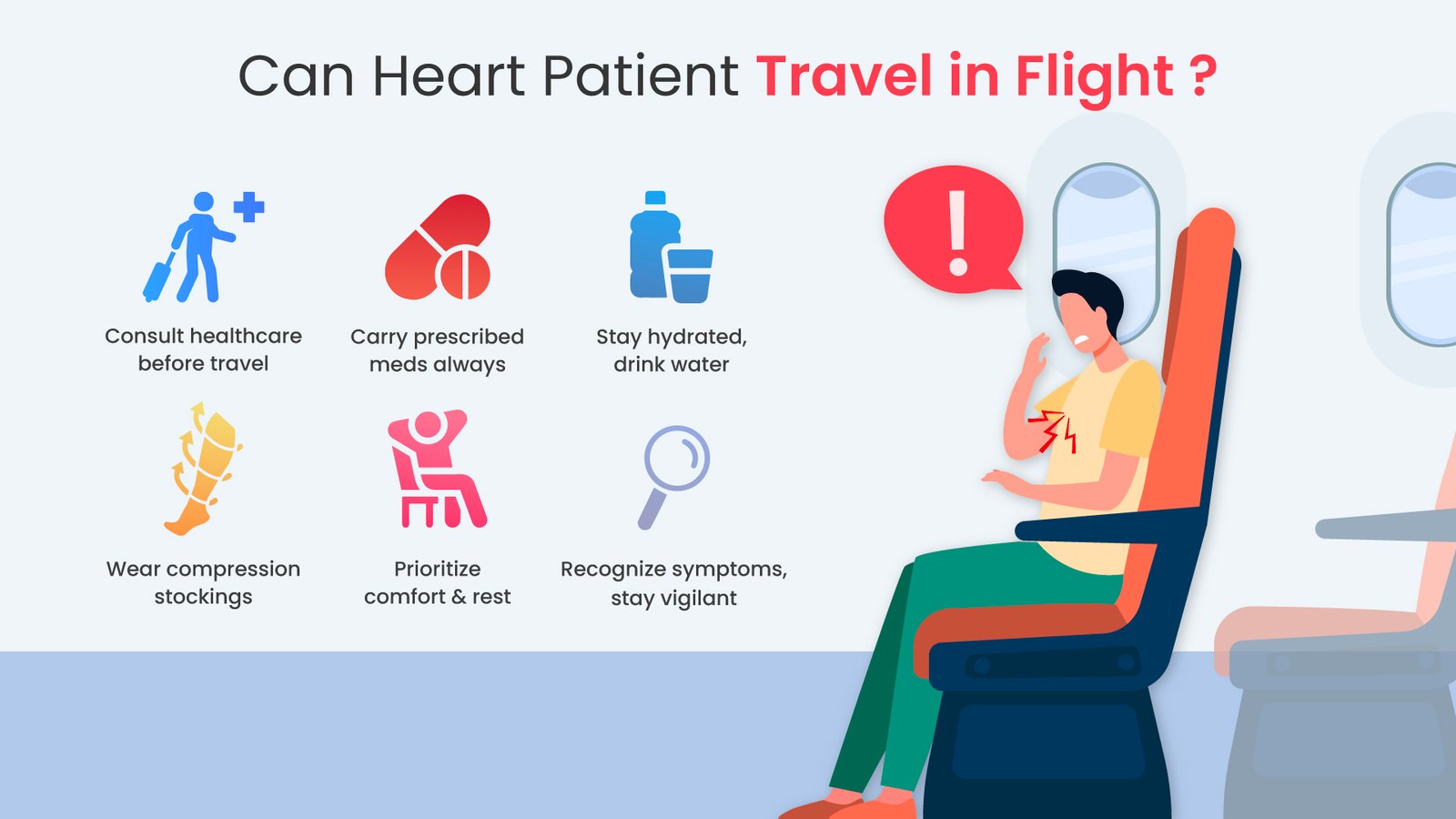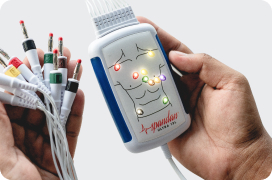
Author:- Mr. Ritesh Sharma
With modernity, air travel has become an important part of people’s lives. Admittedly, there is one paranoia associated with air travel, people tend to contemplate whether can heart patient travel in flight. In recent times, there has been an exponential surge in heart disease. So, there are various queries in the minds of heart patients and their loved ones. One of these queries remains their travel in flight. Heart patients tend to get paranoid at the idea of travelling on a flight.
A flight journey can be a daunting experience for a heart patient. However, are the risks involved in a flight journey so big that heart patients should not travel on the flight at all? This is a big conundrum that every heart patient faces. Let’s examine the question can heart patient travel in flight and uncover worthy insights into it while doing so.
Understanding Heart Disease
Heart disease consists of several conditions associated with the human heart. These conditions include coronary artery disease, heart rhythm disorders, heart valve problems, and congenital heart defects, among others. It is normally believed that the motion of a heart patient is normally limited and he/she isn’t allowed to participate much in physical activity. However, whether, can heart patient travel in flight or not depends highly on the type of severity of the heart disease.
If a heart patient has mild cardiac arrhythmia such as tachycardia then he/she might be comfortable in travelling through a flight with all the necessary precautions. However, if a heart patient is suffering a major heart dysfunction characterized by P-wave ECG abnormalities, QRS complex abnormalities, and T-wave abnormalities, then he/she might have to avoid air travel. It goes without saying that air travel has a lot of risks for a heart patient. Hence, we must examine all these risks before suggesting a heart patient take a flight anywhere.
Potential Risks for Heart Patients in Air Travel
The following is a list of the potential risks for heart patients associated with air travel. Therefore, if you are a heart patient and want to travel by flight, then you must consider these risks before doing so.
- Reduced Oxygen Levels: Oxygen levels at a great height in the flight are reduced most of the time. In such a moment, a heart patient if diagnosed with a specific condition might start experiencing shortness of breath. The compromised cardiac function of a heart patient is further worsened by lower oxygen levels and he/she might start encountering unpleasantness mid-air.
- Immobility: During a flight, there are prolonged periods of immobility. This leads to an increase in the risk of blood clots, known as deep vein thrombosis (DVT). Heart patients, particularly those with additional risk factors such as obesity or a history of clotting disorders, may be more susceptible to this complication.
- Stress and Anxiety: People who are affected by heart disease tend to get extra stressed and anxious during a flight. Stress and anxiety can further exacerbate any heart condition and lead to complications such as high blood pressure, i.e. hypertension and heart palpitations.
- Altitude Changes: Sudden changes in altitude during take-off and landing on an aeroplane can significantly impact patients, especially heart patients with underlying conditions with fluid retention or unstable angina.
Considering all these potential risks during a flight a heart patient must consult a healthcare professional before their air travel. The healthcare professional will examine the patient’s health condition and will let them know if they are healthy enough to travel by flight or not.
Guidelines and Precautions for Heart Patients Considering Air Travel
There are certain guidelines and precautions that all heart patients considering air travel must adhere to. The following is a list of all these guidelines and precautions:
- Medical Clearance: Before proceeding to book a flight, patients with heart conditions must consult their healthcare professional/ cardiologist. The healthcare professional will evaluate the overall cardiac status of the patient and decide whether they can travel by flight or not.
- Medication Management: It is necessary for heart patients to carry their medications prescribed by their healthcare professional with them during the flight even if they are declared healthy to travel by their cardiologist/ physician.
- Hydration: It is essential to stay hydrated during air travel. Since there is low humidity in the aircraft cabin, it can contribute to dehydration and worsen the condition of a heart patient. So, they must consume water from time to time and ensure that their bodies are hydrated.
- Compression Stockings: The patients can also wear compression stockings during their flight. This will improve circulation and reduce the risk of DVT during long flights. Heart patients with risk factors associated with blood clots highly benefit from wearing compression stockings. In addition, they are also recommended to engage in regular leg exercises during the flight.
- Comfort and Rest: Getting adequate rest and comfort during a flight is crucial for a heart patient. So, you must book an aisle seat for the patient which lets them stretch and move around during the flight. Furthermore, bring supportive pillows and cushions to put the least amount of strain on the heart.
- In-Flight Exercise: You must encourage the heart patient to travel on a flight for in-flight exercise. This includes walking up and down the aisle or performing simple stretches in your seat. Through these exercises, blood circulation is improved and the risk of DVT is reduced. However, before doing so, you must take the advice of your healthcare professional.
- Symptom Recognition: It is important to recognize even the slightest of symptoms of a heart problem during the flight of a heart patient. Hence, the heart patient and the people travelling with him/her must stay vigilant about the symptoms and recognize them instantly.
In conclusion, the answer to the question of can heart patient travel in flight is rather nuanced. While there is nothing wrong with a heart patient travelling in flight, he/she must consult their healthcare professionals and seek their advice before doing so. Furthermore, they must be aware of the risk factors associated with flight travel and be prepared for all kinds of emergencies.





